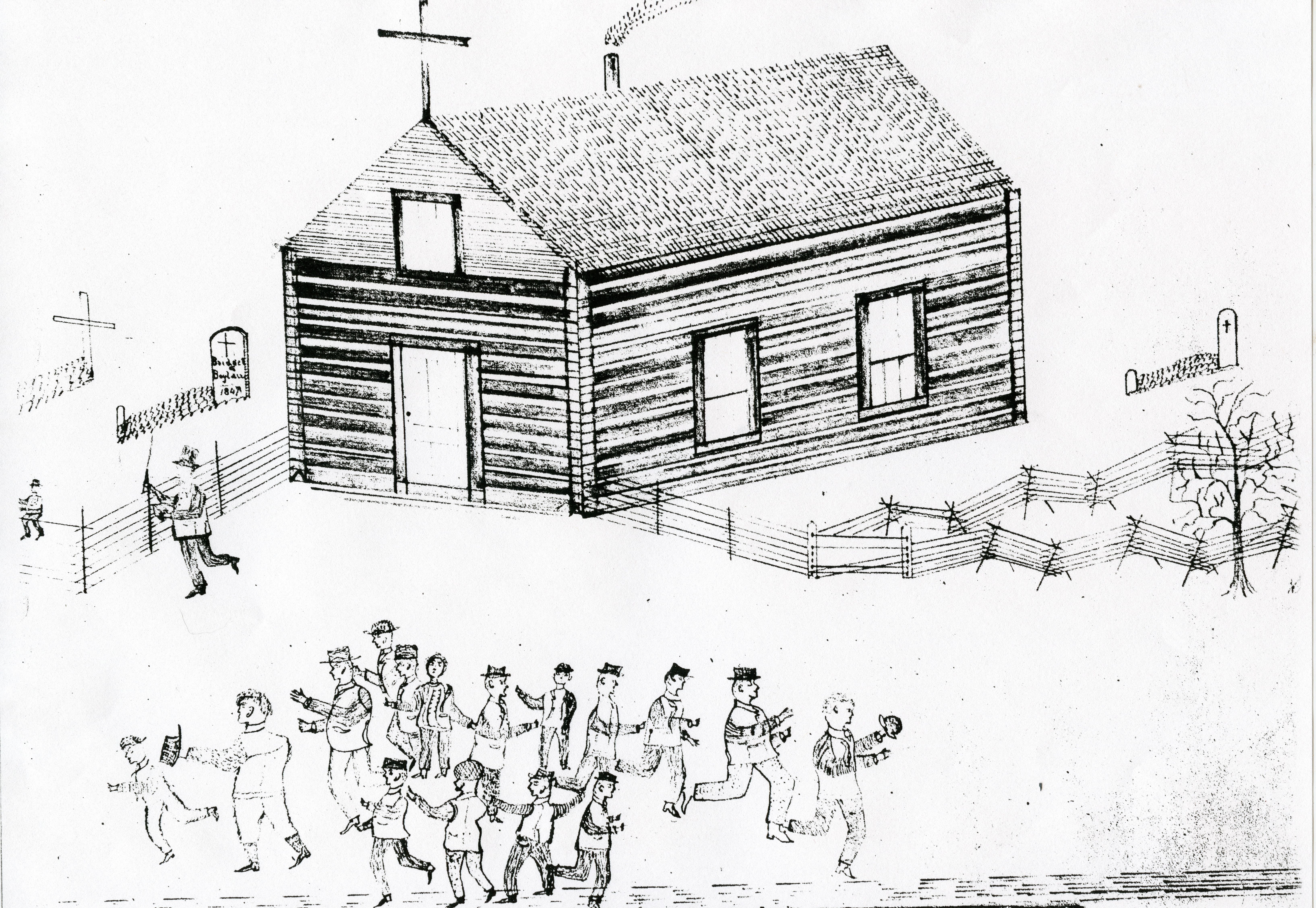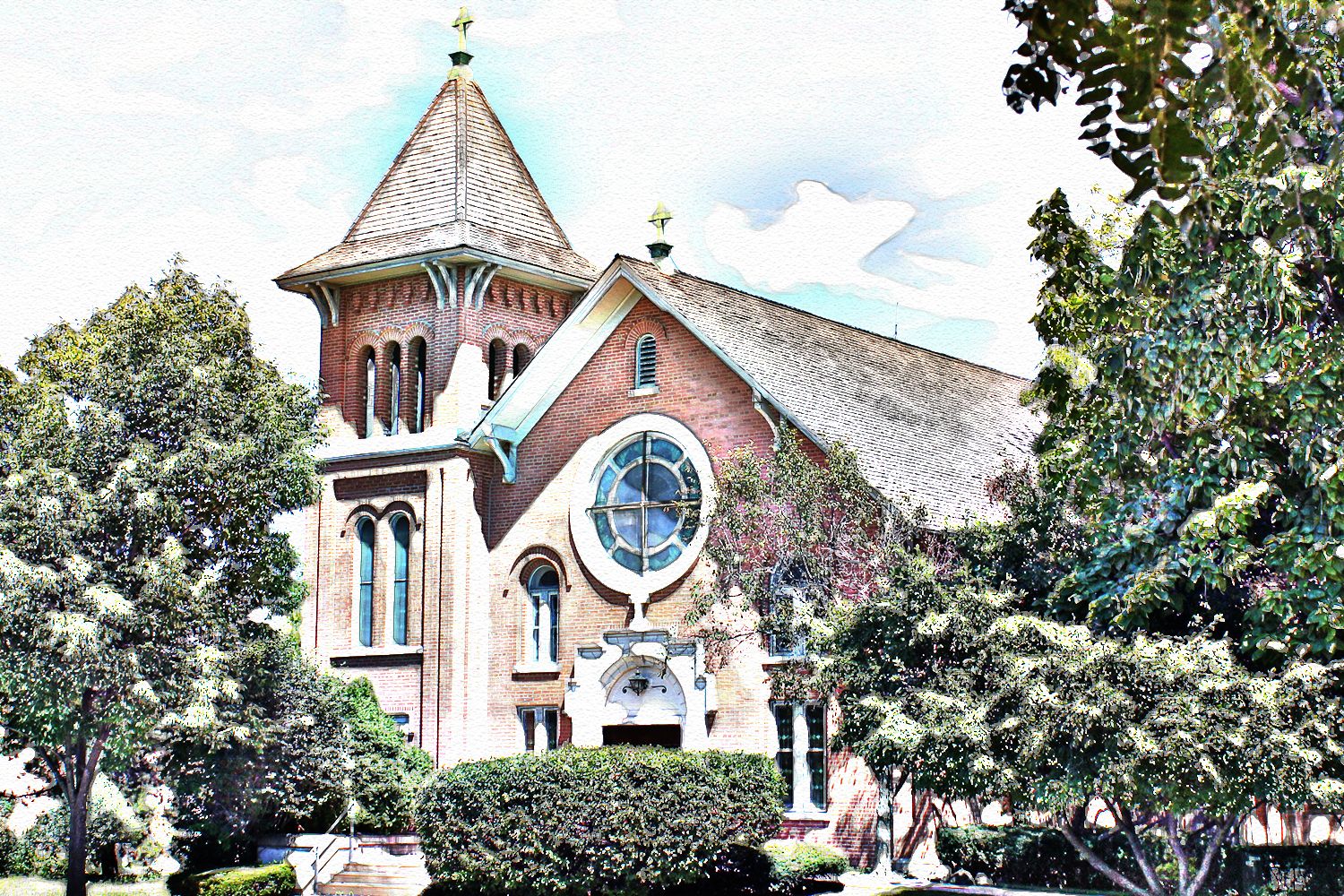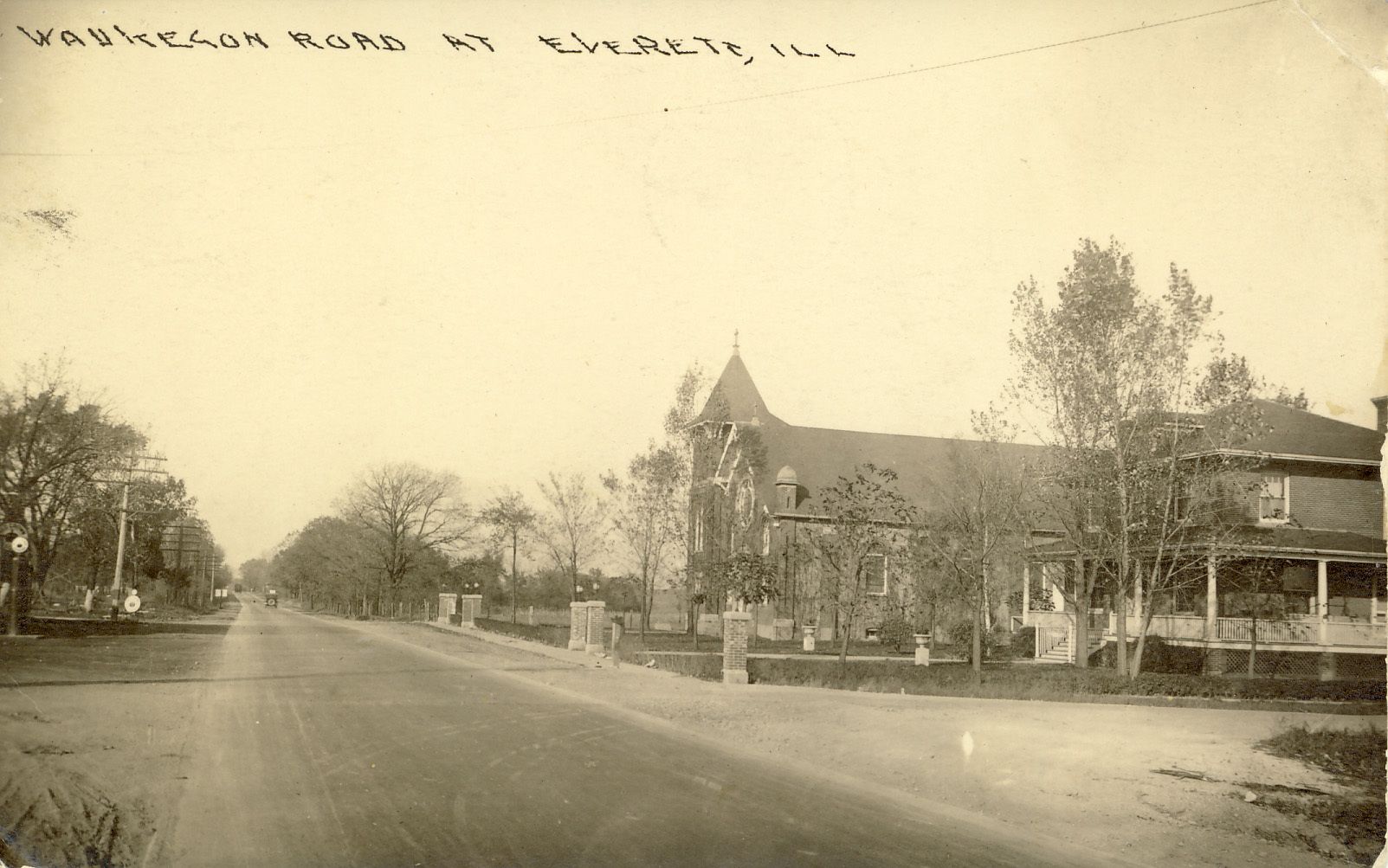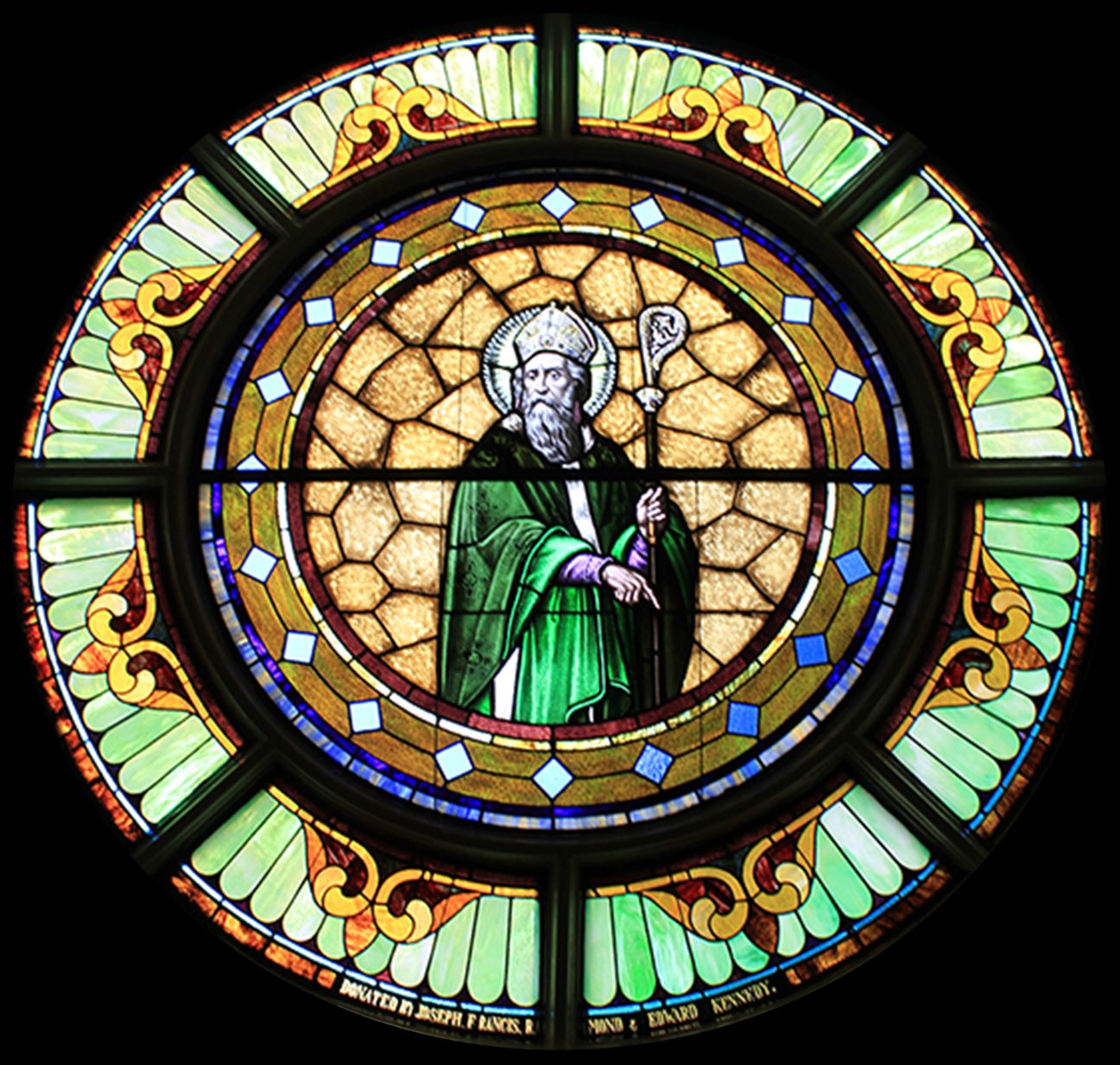
Drawing done by Patrick Boyle in 1897, depicting the original log church (also a school) and cemetery.The grave of early settler Bridget Boylan (d. 1847) is seen to the left of the church.


Drawing done by Patrick Boyle in 1897, depicting the original log church (also a school) and cemetery.The grave of early settler Bridget Boylan (d. 1847) is seen to the left of the church.

The church after the 1908 fire.

The brick church on the corner of Waukegan and Everett Roads.

What is now West Lake Forest was once nothing more than dense forest and untamed savannah. Potawatomi tribes accounted for the entire population, and up until the 1830s, even Chicago, thirty miles to the south, was only a small settlement with a population of 350. Within the decade, Chicago emerged as a bustling hub of commerce, trade, and shipping. However, the land to the north of the growing city was still mostly uninhabited by white settlers until the mid-1830s, when the government laid Green Bay Road, which traveled from Chicago and north towards Milwaukee, parallel to the lakeshore. The first immigrants to arrive in the area were Michael Meehan and his wife, Bridget, who arrived from County Meath, Ireland, in 1835. Despite the very limited communication the Meehans had with other pioneering families and immigrants, word of Meehan’s Settlement quickly began to spread. By 1840, several other Irish families had also settled near Meehan, along what is now Waukegan Road.
To accommodate the influx of Catholic families, a log church was built beside the already established cemetery in 1844 on what is now Waukegan Road. In its early days, St. Patrick’s Church was used as a school, and was officially founded as a Catholic parish in 1849, making it one of the oldest Catholic parishes in the Chicago Archdiocese.
In 1853, construction of a brick church began, and was completed two years later in 1855. This church was located near what is now the northeast corner of Route 60 and Waukegan Road. About two decades later, the brick church had become so cracked and dilapidated that, in 1883, the structure was rebuilt using the same bricks. Lightning struck the newly rebuilt church in 1895, leading to a third reconstruction of the brick church. On July 8th 1908, the church burned down in a fire.
The new St. Patrick's Church, located further south, at the northeast corner of Waukegan and Everett, was
designed by architect Henry Lord Gay and dedicated by Archbishop James Quigley
in 1910. This church still stands, with significant additions; fittingly, it
was built on land purchased from Thomas Yore, descendent of early settler
Michael Yore.
With the old church still standing and being used for smaller masses, a new church was built just east of the Old Church to accommodate for the increasing size of St. Patrick’s congregation. The New Church was dedicated by Cardinal Francis George in 1998. Today, the two separate buildings are home to a large congregation. The old church is known for its 19 stained glass windows, many of which linking to the families that founded the congregation and West Lake Forest. Ten of the windows resemble medieval stained glass, colorfully depicting saints and other biblical figures, while eight others are designed in the geometric “prairie style” of glasswork, which was common in the early 20th century when the windows were installed. The large circular window depicts St. Patrick, the namesake of the church and a connection to the Irish heritage of many of the founders.